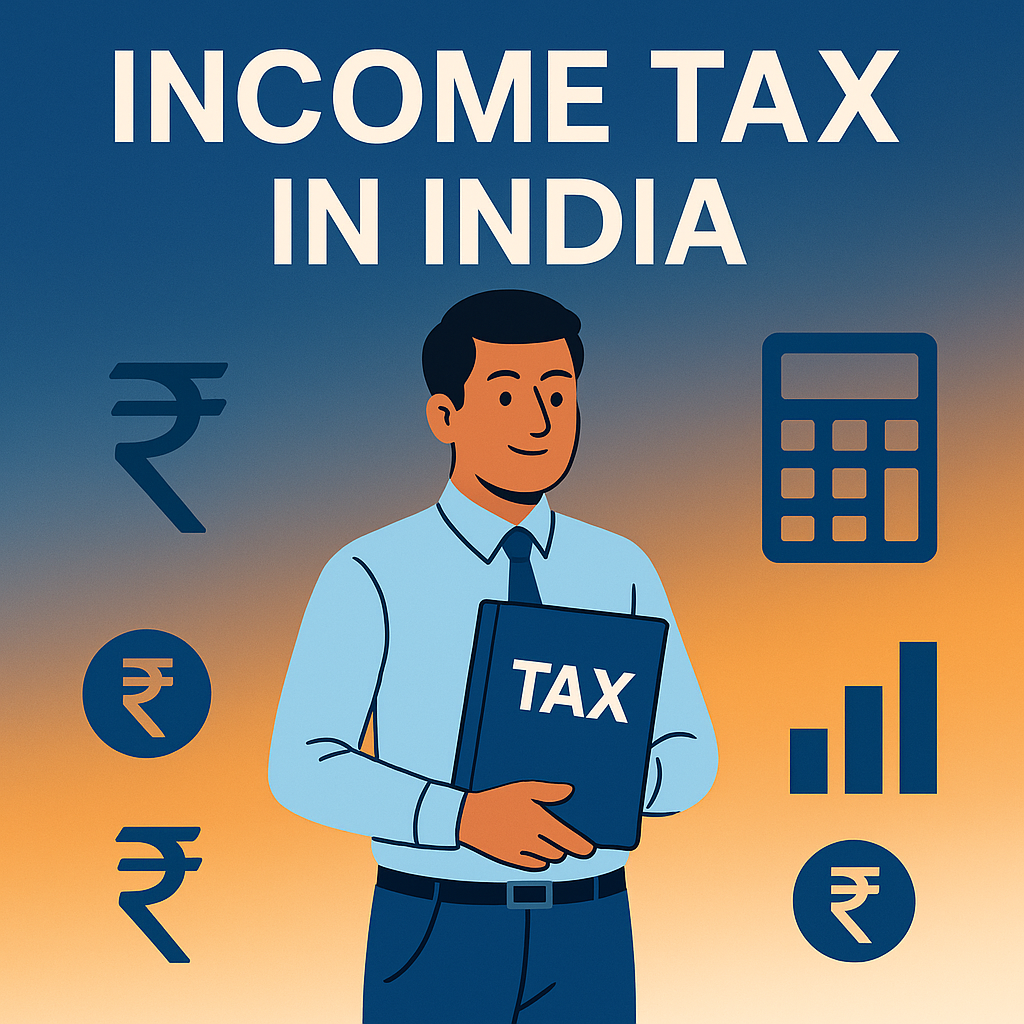Understand income tax in India with rates, slabs, deductions, and tips to save tax legally. Stay updated and plan smart with TaxPeCharcha.

Income tax affects every earning individual and business in India. Whether you are a salaried professional, a freelancer, or a company owner, knowing how income tax works can help you plan better and save money legally. This guide will walk you through the basics, current tax rates, deductions, and smart tips to reduce your tax liability.
1. What is Income Tax?
Income tax is a direct tax levied by the Government of India on the income earned by individuals, Hindu Undivided Families (HUFs), firms, and companies. It is collected annually based on the taxpayer’s income for a financial year.
2. Who Needs to Pay Income Tax?
In India, income tax must be paid if your total income exceeds the basic exemption limit as per the applicable tax regime. This includes:
- Salaried individuals
- Self-employed professionals
- Businesses
- Investors earning from capital gains
- NRIs (Non-Resident Indians) with income in India
3. Types of Income Tax Regimes
a) Old Tax Regime
- Allows multiple exemptions and deductions (e.g., HRA, LTA, 80C, 80D).
- Slabs have higher tax rates compared to the new regime.
b) New Tax Regime
- Lower tax rates but very limited exemptions and deductions.
- Default regime from FY 2023-24 (unless you opt for the old regime).
4. Income Tax Slab Rates for FY 2024-25
New Tax Regime (Default)
| Annual Income Range | Tax Rate |
|---|---|
| Up to ₹3,00,000 | Nil |
| ₹3,00,001 – ₹6,00,000 | 5% |
| ₹6,00,001 – ₹9,00,000 | 10% |
| ₹9,00,001 – ₹12,00,000 | 15% |
| ₹12,00,001 – ₹15,00,000 | 20% |
| Above ₹15,00,000 | 30% |
Old Tax Regime
| Annual Income Range | Tax Rate |
|---|---|
| Up to ₹2,50,000 | Nil |
| ₹2,50,001 – ₹5,00,000 | 5% |
| ₹5,00,001 – ₹10,00,000 | 20% |
| Above ₹10,00,000 | 30% |
5. Deductions and Exemptions
Under the Old Tax Regime, you can reduce your taxable income by claiming deductions such as:
- Section 80C – Investments in PPF, ELSS, LIC, Sukanya Samriddhi (Max ₹1.5 lakh)
- Section 80D – Health insurance premium
- Section 24(b) – Home loan interest deduction (up to ₹2 lakh)
- HRA Exemption – For salaried individuals living in rented houses
- LTA – Leave Travel Allowance for domestic travel
The New Tax Regime offers a standard deduction of ₹75,000 for salaried and pensioners, but most other deductions are not available.
6. How to File Income Tax Return (ITR)
- Collect documents – Form 16, Form 26AS, AIS, bank statements, investment proofs.
- Choose the correct ITR form – ITR-1, ITR-2, etc., based on your income type.
- Login to the Income Tax e-Filing portal – www.incometax.gov.in
- Fill in the details – Income, deductions, and bank account information.
- Verify and submit – Using Aadhaar OTP, net banking, or digital signature.
7. Penalties for Non-Compliance
- Late filing fee up to ₹5,000 under Section 234F.
- Interest on unpaid tax under Sections 234A, 234B, and 234C.
- Prosecution in extreme cases of tax evasion.
8. Tips to Save Tax Legally
- Opt for the old regime if you have high deductions.
- Invest in tax-saving instruments under Section 80C.
- Buy adequate health insurance to claim 80D benefits.
- Plan home loans to use Section 24(b) deductions.
- Make use of NPS contributions under Section 80CCD(1B).
FAQs
1. What is the basic exemption limit for income tax in India?
Under the new regime, it’s ₹3,00,000. Under the old regime, it’s ₹2,50,000.
2. Which tax regime should I choose – old or new?
If you have high deductions, the old regime may be better; otherwise, choose the new regime.
3. Can NRIs file income tax returns in India?
Yes, NRIs must file returns if they have taxable income in India.
4. What is the due date for filing ITR for FY 2024-25?
For individuals, it’s generally 31st July 2025, unless extended.
5. Is income tax applicable on agricultural income?
Agricultural income is exempt, but it may be considered for tax rate calculation.
Related Blog Suggestions
- How to File ITR-1 Online – Step-by-Step Guide
- 10 Smart Ways to Save Tax in India
- Understanding the New Income Tax Regime
Closing Note
Thank you for reading! We at TaxPeCharcha are committed to making tax and finance easy to understand for everyone. Stay connected with us for more updates—follow our website and social media pages for the latest tips, news, and guides.
